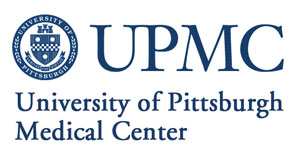Emergence of Gram-negative Resistance in Blood Culture Isolates of Solid-organ Transplant Recipients
| Status: | Completed |
|---|---|
| Conditions: | Gastrointestinal |
| Therapuetic Areas: | Gastroenterology |
| Healthy: | No |
| Age Range: | Any |
| Updated: | 6/14/2018 |
| Start Date: | September 2006 |
| End Date: | June 2017 |
Emergence of Gram-negative Resistance in Blood Culture Isolates of Solid-organ Transplant Recipients; a Comparative Study With a Non-transplant Population
The information collected will provide insight in to the epidemiology of antibiotic
resistance in a transplant compared to a non-transplant population. Data is needed regarding
the date of admission, date of bloodstream infection and location of ward/ICU so trends in
the emergence of resistance and antibiotic usage can be detected.
resistance in a transplant compared to a non-transplant population. Data is needed regarding
the date of admission, date of bloodstream infection and location of ward/ICU so trends in
the emergence of resistance and antibiotic usage can be detected.
We need to collect details on the demographics (age, sex etc), underlying conditions,
transplant types and immunosuppression, in-hospital antibiotic management and clinical
outcomes so that the effect of antibiotic resistance on patient outcome can be measured. We
also need to collect microbiology and pathology data to determine the antibiotic
susceptibility profile of the involved organisms. The following variables will be followed:
time and location of positive cultures, underlying diseases and severity of illness,
prophylactic antimicrobials, physical exam findings, laboratory and radiographical data,
empiric antimicrobial usage, microbiological data and resistance patterns, choice of
antibiotic once organism identified, suspected source of infection, microbiological and
clinical outcomes, laboratory results, demographic information, medications, gender, weight,
ethnicity, and past medical history
transplant types and immunosuppression, in-hospital antibiotic management and clinical
outcomes so that the effect of antibiotic resistance on patient outcome can be measured. We
also need to collect microbiology and pathology data to determine the antibiotic
susceptibility profile of the involved organisms. The following variables will be followed:
time and location of positive cultures, underlying diseases and severity of illness,
prophylactic antimicrobials, physical exam findings, laboratory and radiographical data,
empiric antimicrobial usage, microbiological data and resistance patterns, choice of
antibiotic once organism identified, suspected source of infection, microbiological and
clinical outcomes, laboratory results, demographic information, medications, gender, weight,
ethnicity, and past medical history
Inclusion Criteria:
- All patients with a positive blood culture isolate growing a gram-negative organism
will be included from 1996 - 2005
We found this trial at
1
site
200 Lothrop St
Pittsburgh, Pennsylvania 15213
Pittsburgh, Pennsylvania 15213

Principal Investigator: David L Paterson, MD
Phone: 412-648-6401
University of Pittsburgh Medical Center UPMC is one of the leading nonprofit health systems in...
Click here to add this to my saved trials